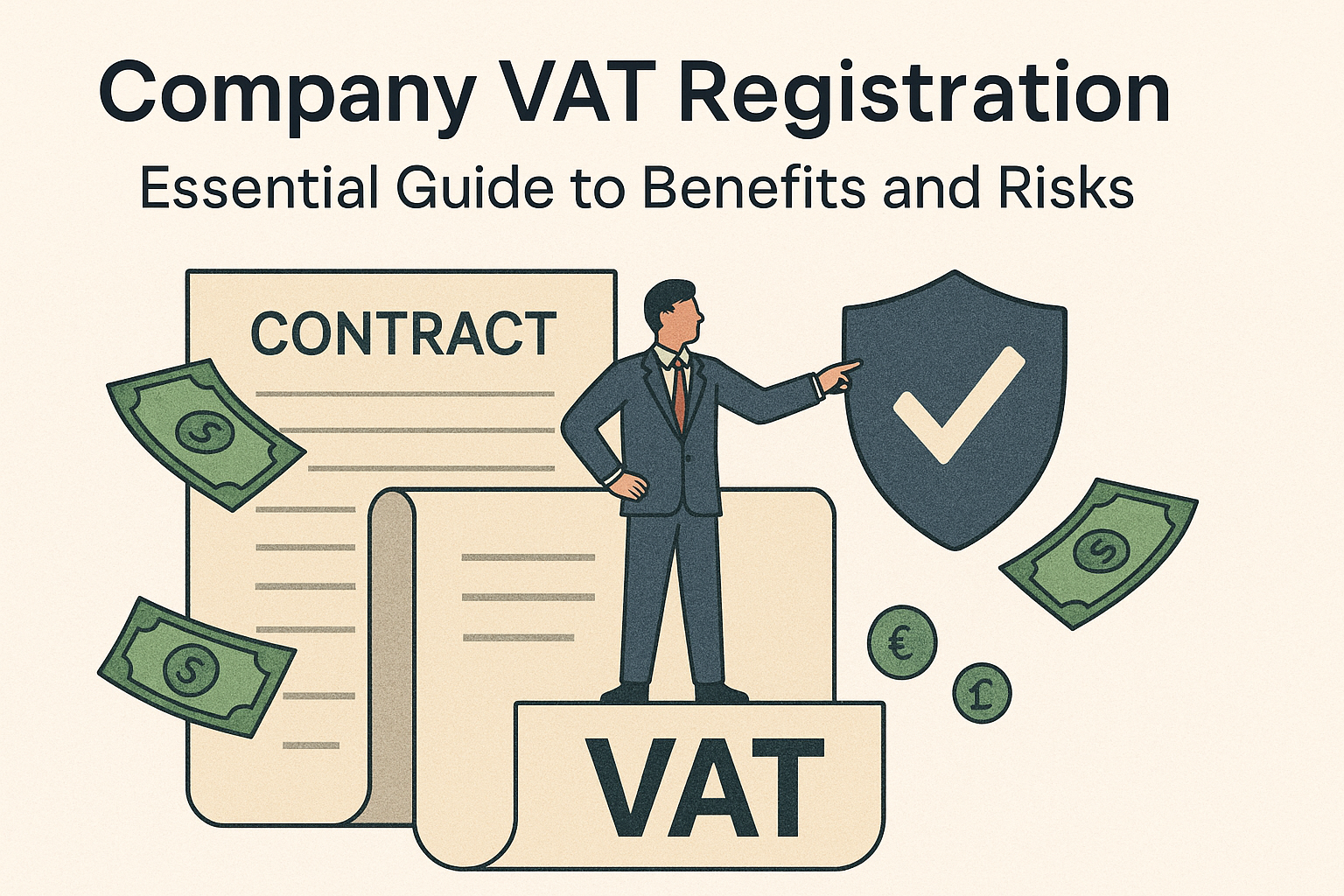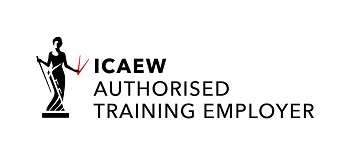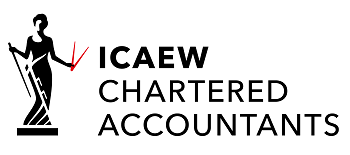
Let me start with a confession: I’ve watched more businesses stumble into VAT penalties than I care to count. Not because they’re reckless or incompetent, but because company VAT registration feels like navigating a maze blindfolded while someone keeps moving the walls.
Here’s the thing that keeps me up at night—most business owners treat company VAT registration like dental work. Something you’ll definitely need to do eventually, but you’ll put it off until the pain becomes unbearable. Except with VAT, that pain comes with a £100 penalty for late registration, plus interest, plus the suffocating realisation that HMRC doesn’t share your sense of humour about “minor oversights.”
But what if I told you that getting your company VAT registration sorted properly isn’t just about avoiding penalties? What if it could actually become one of the smartest moves you make for your business cash flow?
The £90,000 Question (And Why It’s Not Really About £90,000)
Everyone knows the magic number: £90,000 in taxable turnover over 12 months triggers mandatory VAT registration. What fewer people grasp is that this figure represents your taxable turnover, not your profit. That second-hand car dealer selling £100,000 worth of vehicles? If they’re buying at £90,000 and selling at £100,000, their actual taxable turnover might be just the £10,000 margin.
I’ve seen businesses panic unnecessarily because they confused gross sales with taxable turnover. Equally, I’ve watched others sail past the threshold without realising they’d crossed it.
The 12-month rule creates another wrinkle. HMRC doesn’t care that eleven months of your trading year were spent earning £3,000 monthly, then December exploded with a £70,000 contract. Cross £90,000 in any rolling 12-month period, and you’re in VAT territory.
The future earnings trap catches even more businesses off-guard. If you can reasonably expect your turnover to exceed £90,000 in the next 30 days, you must register now. This forward-looking test snares rapidly growing businesses who think they’re still safely under the radar.
The threshold increase from £85,000 to £90,000 in April 2024 provided temporary relief for many businesses, but it also created confusion. Some businesses thought they could deregister immediately, not realising the deregistration threshold is different—£88,000.

When Early Registration Actually Makes Financial Sense
Voluntary company VAT registration before you hit the threshold? Sounds masochistic, right? Sometimes it’s actually brilliant.
Consider this scenario: You’re a construction business spending £2,000 monthly on materials and equipment, all subject to 20% VAT. That’s £400 monthly in VAT you’re absorbing as a cost. Register voluntarily, and you reclaim that £400 every month. Over a year, that’s £4,800 back in your pocket.
The cash flow improvement can be immediate and substantial, particularly for businesses with significant VAT-inclusive expenses but sales primarily to VAT-registered customers who won’t be deterred by your 20% price adjustment.
Here’s where it gets interesting: flat rate VAT schemes can turn company VAT registration into a profit centre for certain businesses. A consultancy might pay 14.5% flat rate VAT while charging clients 20%. If your actual VAT on expenses is minimal, you pocket the difference.
| Business Type | Standard VAT Rate on Sales | Flat Rate VAT % | Potential Advantage |
| IT Consultancy | 20% | 14.5% | 5.5% margin boost |
| General Building/Construction | 20% | 9.5% | Significant if low VAT inputs |
| Accounting Services | 20% | 13.5% | 6.5% effective saving |
| Retail Food & Confectionery | Often 0% | 4% | Usually disadvantageous |
Note: This table assumes businesses qualify for flat rate scheme and have minimal VAT-reclaimable expenses
The Registration Minefield: Where Good Intentions Go Wrong
I need to share something that might make your accountant wince: the online company VAT registration system, while functional, contains enough subtle traps to derail even careful applications.
The business start date confusion trips up almost everyone. HMRC wants to know when you started trading, not when you incorporated your company or when you first thought about starting a business. Get this wrong, and they’ll recalculate your liability period, potentially creating an immediate penalty situation.
Your principal business activity code matters more than you’d expect. Choose incorrectly, and you might find yourself subject to different VAT rules, reporting requirements, or even excluded from beneficial schemes you’d otherwise qualify for.
The estimated VAT liability question feels like pure guesswork, but HMRC uses this figure to determine your payment and return frequency. Underestimate significantly, and you’ll face monthly returns instead of quarterly ones. Overestimate, and you might trigger additional scrutiny from the start.
Timing: The Make-or-Break Element Everyone Gets Wrong
Here’s what keeps businesses awake at night: you have 30 days from the end of the month in which you exceeded the threshold to register. Miss this deadline, and penalties start accumulating immediately.
But timing involves more than just deadlines. Register mid-quarter, and your first VAT return period becomes a partial quarter. This creates administrative complexity and increases the likelihood of errors on your first return—exactly when you least want to make mistakes.
Smart businesses often choose their company VAT registration date strategically. If you’re crossing the threshold in March, registering from April 1st creates a clean quarterly alignment with many businesses’ natural accounting periods.
The effective date versus application date distinction confuses almost everyone. You can be registered from a date before you actually submit your application, meaning you might owe VAT on sales made before you even knew you were VAT-registered.

The Hidden Costs Nobody Warns You About
Company VAT registration isn’t just about collecting an extra 20% on your sales. The administrative burden can be substantial, particularly for businesses used to simple record-keeping.
Accounting software upgrades often become necessary. That basic bookkeeping system that served you perfectly might suddenly feel inadequate when you need to track VAT rates, reclaim input tax, and generate VAT returns.
Staff training becomes essential. Every invoice must be VAT-compliant, every purchase needs proper documentation for reclaims, and someone needs to understand the different VAT rates for different products or services.
Cash flow timing changes dramatically. You’ll be collecting VAT from customers and paying it to HMRC quarterly (or monthly), creating a cash flow loan effect. Many businesses find themselves accidentally spending the VAT money they’re holding for the government.
The complexity multiplies if you sell internationally. Suddenly you’re dealing with zero-rated exports, reverse charge mechanisms for imports, and the ongoing uncertainty around post-Brexit VAT rules for EU trade.
Beyond Basic Registration: Schemes That Could Save Your Sanity
The Annual Accounting Scheme lets you make nine equal monthly payments based on your estimated VAT liability, then balance up annually. For businesses with predictable seasonal patterns, this can eliminate the cash flow peaks and troughs of quarterly payments.
Cash Accounting for VAT means you account for VAT when you actually receive payment, not when you invoice. For businesses dealing with slow-paying customers, this prevents the nightmare scenario of owing VAT to HMRC on money you haven’t yet received.
The Flat Rate Scheme we touched on earlier, but here’s the nuance: it’s not just about the percentage rate. It dramatically simplifies your VAT administration. No more tracking input VAT on every purchase, no more complex calculations. You simply apply your flat rate percentage to your VAT-inclusive turnover.
What Nobody Tells You About VAT Inspections
HMRC doesn’t just complete your company VAT registration and forget about you. VAT-registered businesses enter a different compliance universe, where periodic reviews and potential inspections become part of the landscape.
Your record-keeping obligations multiply exponentially. Every VAT transaction needs supporting documentation, kept in a specific format, accessible for inspection, and retained for six years. Digital records are acceptable, but they must be complete and unalterable.
The Making Tax Digital requirements mean your VAT returns must be submitted through compatible software. No more manual calculations or paper submissions. This isn’t just a technical requirement—it fundamentally changes how you manage your VAT processes.
At Ask Accountant, we’ve guided hundreds of London businesses through the company VAT registration maze. What strikes me most is how businesses that get their registration strategy right from the start—considering timing, schemes, and long-term implications—often find VAT becomes a manageable part of their financial routine rather than a constant source of stress.
The International Complication Layer
Brexit transformed VAT for UK businesses trading internationally. What used to be straightforward EU transactions now involve complex rules around Northern Ireland Protocol implications, new import VAT procedures, and changed export documentation requirements.
Selling digital services internationally? You’re potentially dealing with place of supply rules that vary by customer location. A software consultancy might find itself needing to register for VAT in multiple EU countries if it serves business customers across Europe.
The postponed VAT accounting scheme for imports sounds helpful—you can account for import VAT on your VAT return rather than paying at the border—but it requires specific procedures and carries risks if you get the accounting wrong.
Red Flags That Trigger HMRC Attention
Certain patterns in your company VAT registration and early returns can attract unwanted scrutiny. Claiming unusually high input VAT compared to your output VAT in early returns often triggers queries. This might be perfectly legitimate if you’ve invested heavily in equipment or stock, but have your documentation ready.
Frequent changes to your registration details, business activities, or accounting periods can suggest uncertainty about your obligations. While sometimes necessary, these changes often prompt HMRC to take a closer look at your compliance.
Round numbers in VAT returns sometimes indicate estimates rather than actual calculations. While not inherently problematic, they can suggest less-than-rigorous record-keeping.
When Professional Help Becomes Essential
Here is what I have observed, the businesses that are least successful when it comes to company VAT registration are the ones that go it all alone and end up viewing the whole process as just another clerical routine rather than an important aspect of the businesses enterprise.
The simple task or the process of registering may appear to be a simple one but the repercussions find their way through every nook of your business operations. Your pricing policy, the cash flow situation management, communication with your clients and internal process all should be changed.
Making a mistake does not only implies punishment. It can equate to months of messy corrections, HMRC enquiries, and the anxiety of realizing that your business compliance has something to be desired.
Tax advisory services do more than simply complete the paperwork, they allow them to explain whether it benefits voluntary registration, which schemes could be most beneficial to their particular facts, and how to organise their operations to reduce the future compliance cost.

The Reality Check: Is Your Business Actually Ready?
Before you rush into company VAT registration—whether mandatory or voluntary—honestly assess your business readiness. Do you have systems that can track VAT accurately? Can you issue proper VAT invoices? Are you prepared for the cash flow implications?
The acid test: Can you explain to a customer why your prices are increasing by 20% overnight when you register? Can you handle suppliers who might question your VAT number’s validity? Are you ready for the additional scrutiny that comes with being VAT-registered?
Most importantly, do you understand that company VAT registration isn’t just about adding 20% to your prices? It’s about joining a compliance regime that touches every transaction, every customer interaction, and every financial process in your business.
| Registration Scenario | Timing Advantage | Cash Flow Impact | Administrative Burden |
| Mandatory at £90k threshold | None – required | Immediate 20% collection obligation | High initially, moderate ongoing |
| Voluntary early registration | Strategic timing possible | Potential input VAT reclaims | Immediate full compliance required |
| Delayed registration (missed deadline) | None | Penalties plus backdated liability | High plus penalty management |
| International trader | Critical for EU compliance | Complex quarterly settlements | Significantly elevated |
The truth about company VAT registration? It’s simultaneously more straightforward and more complex than most businesses expect. The mechanics are well-documented, but the implications are far-reaching and highly dependent on your specific circumstances.
Done right, company VAT registration becomes a manageable part of your business operations, potentially even advantageous. Done wrong, it becomes a persistent source of stress, penalties, and administrative burden.
If your business is approaching the £90,000 threshold, or if you’re considering voluntary registration, the time to plan is now. Not when HMRC sends you a penalty notice, not when your first VAT return is due, but while you still have the luxury of making strategic decisions rather than reactive ones.
For complex situations—and honestly, most VAT scenarios have some complexity—consider reaching out to experienced professionals who deal with company VAT registration daily. At Ask Accountant, our business accounting services include comprehensive VAT guidance, from initial registration through ongoing compliance. Our proactive tax advisory solutions help London businesses navigate the complexities of VAT registration while optimising their overall tax position.
The investment in getting your company VAT registration right from the start typically pays for itself many times over in avoided penalties, optimised cash flow, and peace of mind.
Contact Ask Accountant at 178 Merton High St, London SW19 1AY, or call +44(0)20 8543 1991 for guidance tailored to your specific business situation.
Frequently Asked Questions
Q: Can I register for VAT before I start trading?
A: Yes, but timing matters. You can register up to 4 years before you start trading, but this might trigger unnecessary compliance obligations before you have any income.
Q: What will occur once I miss to discover when I achieve 90000?
A: HMRC will make you go back to the time you should have rather registered, impose penalties and demand VAT on all the sales made on or after that date-although you may not have received it from your customers.
Q: Am I allowed to deregister as VAT registered?
A: Yes, assuming you are below the turnover of £88,000 (Deloitte), however you have to be registered at least 12 months, and it is not always cost effective to deregister.
Q: Do I need to have different rates of VAT in terms of their product?
A: Potentially. Various goods and services are subjected to varying rates of 20 percent (standard rate), 5 per cent (reduced rate) and 0 per cent (zero rate). Revision of this is costly.
Q: How frequently do I require to send VAT returns?
A: Quarterly in most cases but monthly where your estimate of VAT owing in a year is more than 2.3 million pounds or where HMRC needs it to be so as a consequence of non compliance.







